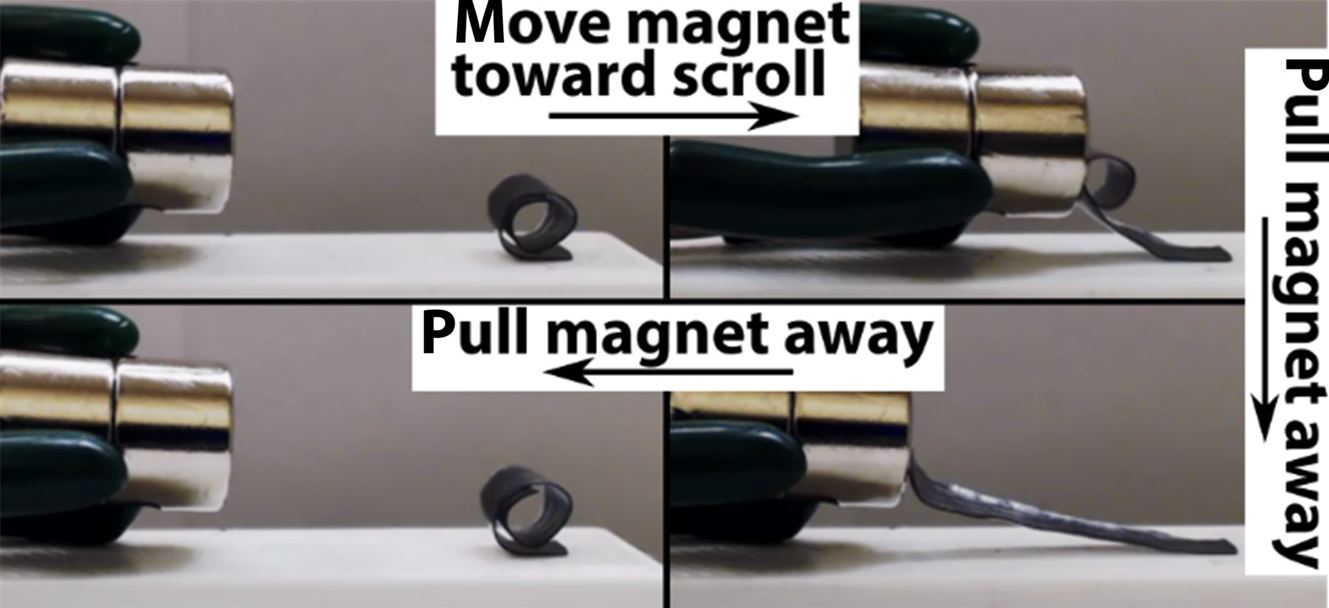
Soft robots may be the future, but there are challenges with their use. Some applications require stiff material which will hold its shape, and soft materials just won’t do the job. Now, scientists have come one step closer to overcoming this challenge by creating soft robots that can be reconfigured into firm shapes.
It works by creating robots from a polymer which has tiny particles of iron embedded within it, making it magnetic. Most of the time, the material is firm and keeps its shape. But if it is heated using light from an LED, it becomes pliable and can be reconfigured into different shapes. And once in this pliable form, the robots can be controlled by applying a magnetic field. To”lock” the shape, the scientists just remove the LED light.
“We’re particularly excited about the reconfigurability,” Joe Tracy, a professor of materials science and engineering at North Carolina State University and a co-author of the paper, said in a statement. “By engineering the properties of the material, we can control the soft robot’s movement remotely; we can get it to hold a given shape; we can then return the robot to its original shape or further modify its movement; and we can do this repeatedly. All of those things are valuable, in terms of this technology’s utility in biomedical or aerospace applications.”
The scientists tested the robots and found that they could be configured into “grabbers” which lift and move objects, or into “flowers” with petals that fold and bend.
“We are not limited to binary configurations, such as a grabber being either open or closed,” Jessica Liu, a Ph.D. student and lead author of the paper, explained. “We can control the light to ensure that a robot will hold its shape at any point.”
The next step for the researchers is to tweak the material that the soft robots are made of. If they can create polymers that respond at different temperatures, they will be able to use the robots in different settings.
The findings are published in the journal Science Advances.


